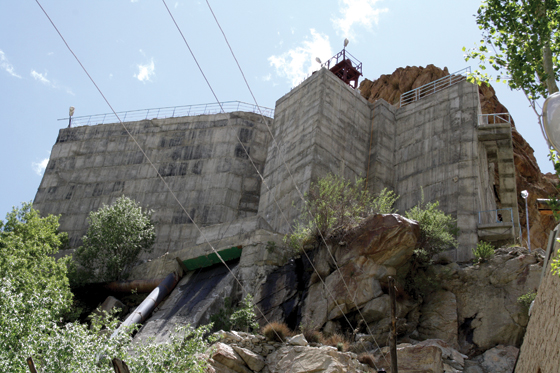After travelling through lifeless mountains for around three hours and covering and distance of about 100 kilometres from Kargil town, one reaches a small village of about 30 households called Sanjak.

The village known for its fine-quality apricots is located on the banks of river Sindh. Sanjak has a micro power project with 3 Francis (horizontal) turbines of 420 KW each. The design discharge for all three turbines is 2.85 cumecs.
Sanjak Mini Hydel Project was commissioned in October 2011 but remained functional for only one and a half months. During that time Sanjak supplied a total of 380 KW up to the last village of Kargil district called Hanskut. The total cost for both civil and electro-mechanical works carried out at Sanjak is 693.07 lacs. “During that time turbines were put on load alternatively,” said Mohammad Ali Bhat, JE in charge Sanjak.
The source of water for Sanjak is Kanji Nallah, a tributary of Sindh River. The work started in 1991 but as Sanjak is only a few kilometres away from the Batalik sector the work did not progress because of frequent fire exchanges, it remained totally disturbed later during the Kargil War.
Civil work was carried out by local contractors from Kargil while powerhouse building, head work complex and water conductor conduits were all done by M/s M N Co.
Apart from electrifying the village 24 x 7 for the first time during trial run, Sanjak has so far failed to benefit villagers by means of employment etc.
“Right now because of some technical faults in Sanjak the entire area is fed through a DG set,” said Bhat. Unfortunately, unlike the Sanjak Project, diesel generators can be run for a limited period only as per unit cost is around Rs 14. As of now Sanjak and its adjoining villages are getting supply for 4.5 hours only from a diesel generator set installed at Khaltsi. “The net head of Sanjak, which is one of the highest in Ladakh is in its final stage of completion, once it is done we will be able to put it on load,” added Bhat.
The net head is at 49.60 meters. In order to stop big rocks from entering the 800-meter-long canal, engineers installed a large mash. But in August 2010 strong floods carried away the mash and filled the entire opening of the canal with rocks and heavy silt. One of the major issues experienced at Sanjak during its trial run was that turbine bearings needed to be cooled timely with silt-free water else they would not function properly.
The Sanjak village is one of the most educated regions in the entire Kargil district. During the trial run of Sanjak, it covered eight villages in all including 30 households of Sanjak villages. The other villages to be covered under Sanjak are Hagnis, Shakkar, Kharbu, Sando, Chiktan, Samrah and Kangral. Once the project is fully functional and all three turbines are put on load Sanjak will be able to meet the simple lighting needs of all the connected villages.
SERC has put its cost at Rs 25.29 crore and its tariff at Rs 8.80 per unit.















